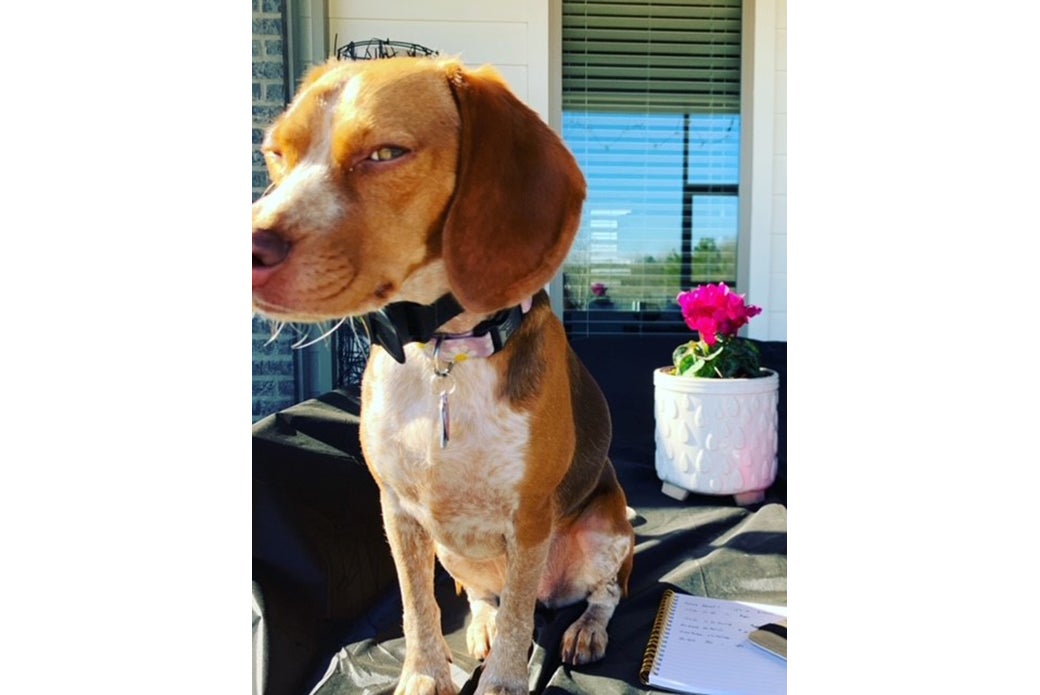When Danielle G. left her house in Baton Rouge, Louisiana to run a quick errand on February 5, she left her two-year-old chocolate Beagle, Daisy, at home.
But when Danielle returned less than a half-hour later, she knew immediately that something wasn’t right.
“I had given Daisy a duck-flavored calming treat from a new jar right before I left,” Danielle says. “I put the lid back on and put them on the kitchen island. When I got home, the jar was on the living room floor with the plastic lid popped off, and all but a few of the treats were gone.”
Danielle theorized that Daisy had jumped onto a kitchen stool and then onto the counter to access the jar.


“I was in panic mode,” says Danielle. “I called my veterinarian, and they asked how many she had eaten. I said I didn’t know. They referred me to the ASPCA Animal Poison Control Center (APCC).”
The Dangers of Soft Chews
Briana Felkner, Senior Director of APCC staff, explains that the calming treats Daisy ingested usually contain hemp, chamomile, valerian and tryptophan, which can cause vomiting and diarrhea.
“However, the most concerning thing is that these are soft chews, which can result in severe electrolyte abnormalities if consumed in large quantities,” Briana says.


“In Daisy’s case we were most worried about high sodium,” says Dr. Tina Wismer, Senior Director of APCC. “When your salt levels get too high, you’re prone to sedation, wobbliness, tremors and seizures. The agents that keep the soft chews soft pull water out of the cells into the digestive tract, so you also get watery diarrhea and electrolyte changes.”
Dr. Wismer says other items that can cause abnormally high sodium levels include, “sugary items like gummy bears or brown sugar, or even sawdust and wallboard.”
Getting the Treats Out
While on the phone with the APCC, Danielle received instructions on how to make Daisy vomit.
“In Daisy’s case, Danielle was instructed to give a specific volume of three percent hydrogen peroxide,” says Dr. Wismer.
When Danielle tried to entice Daisy to ingest the hydrogen peroxide by disguising it with peanut butter and other flavors, she was unsuccessful. But with help from her neighbor and a baby syringe, Danielle was eventually able to squirt the solution directly into Daisy’s mouth.


Danielle then walked Daisy around the house, as the APCC operator had instructed. Within minutes, Daisy began to vomit up the treats.
“It was clear she had gulped them down,” Danielle says. “Within 20 to 30 minutes she threw up 78 of the treats, all whole. I counted them all.”
Returning to Normal
In 2020, APCC, which operates 24 hours a day and 365 days a year, helped more than 370,500 animals like Daisy, including cases from all 50 states and different countries across the world. Just ahead of National Poison Prevention Week, APCC released our annual list of top toxins for pets to help pet owners, veterinarians and shelters nationwide keep their animals safe and healthy.
“APCC stayed on phone with me. They were great,” says Danielle, who reports that Daisy was sleepy after she threw up, but back to normal the next day.


Normal for Daisy is, “sassy, super smart and sweet,” according to Danielle, a lifelong dog lover, especially of Beagles.
“This was Daisy’s first real bout of mischief. But she’s a Beagle, and hounds have a keen sense of smell,” Danielle says. “That duck flavor is something she loves.”
These days, Danielle is a lot more careful with Daisy’s soft chews, storing the treats in a plastic bag inside the jar and locking the jar in the pantry.
“It could have been really bad,” says Danielle. “The ASPCA saved Daisy’s life.”


The ASPCA Animal Poison Control Center is available 24 hours a day, seven days a week, 365 days a year. If you believe your pet may have ingested something harmful, please contact them at (888) 426-4435 or contact your local veterinarian immediately.
Source: Read Full Article
